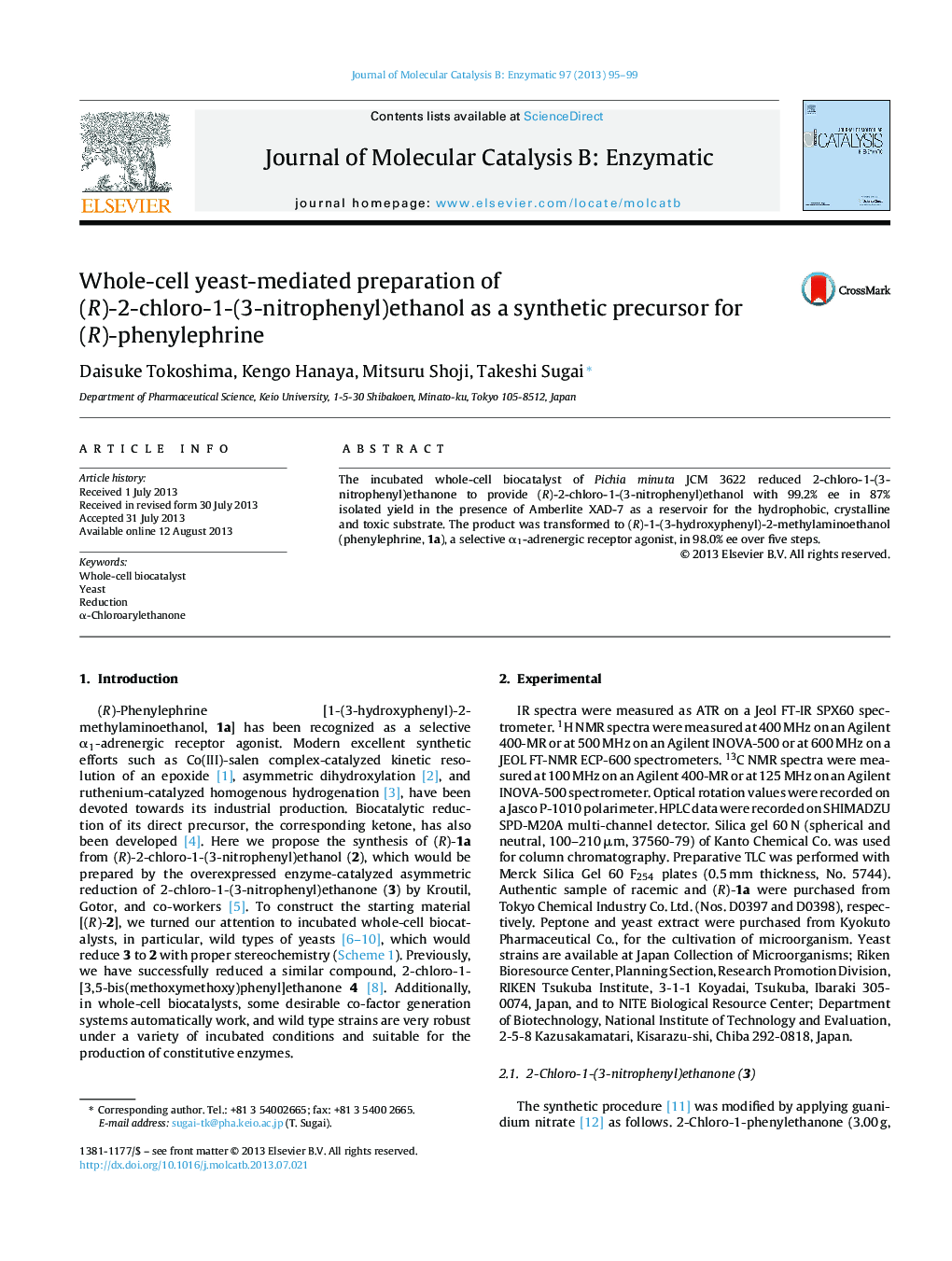| Article ID | Journal | Published Year | Pages | File Type |
|---|---|---|---|---|
| 69594 | Journal of Molecular Catalysis B: Enzymatic | 2013 | 5 Pages |
•P. minuta reduced 2-chloro-1-(3-nitrophenyl)ethanone to give (R)-alcohol.•Substrate is easily prepared by nitration of 2-chlorophenylethanone.•Amberlite XAD-7 effectively worked for a reservoir of the substrate.•The product was transferred to (R)-phenylephrine, an α1-adrenergic receptor agonist.•Five-step transformation proceeded without loss of the ee (98.0%).
The incubated whole-cell biocatalyst of Pichia minuta JCM 3622 reduced 2-chloro-1-(3-nitrophenyl)ethanone to provide (R)-2-chloro-1-(3-nitrophenyl)ethanol with 99.2% ee in 87% isolated yield in the presence of Amberlite XAD-7 as a reservoir for the hydrophobic, crystalline and toxic substrate. The product was transformed to (R)-1-(3-hydroxyphenyl)-2-methylaminoethanol (phenylephrine, 1a), a selective α1-adrenergic receptor agonist, in 98.0% ee over five steps.
Graphical abstractFigure optionsDownload full-size imageDownload as PowerPoint slide
